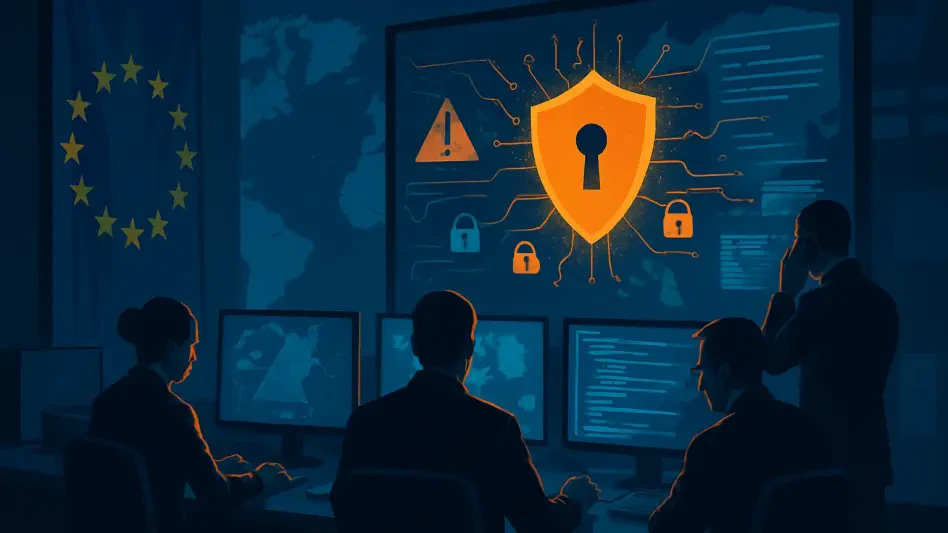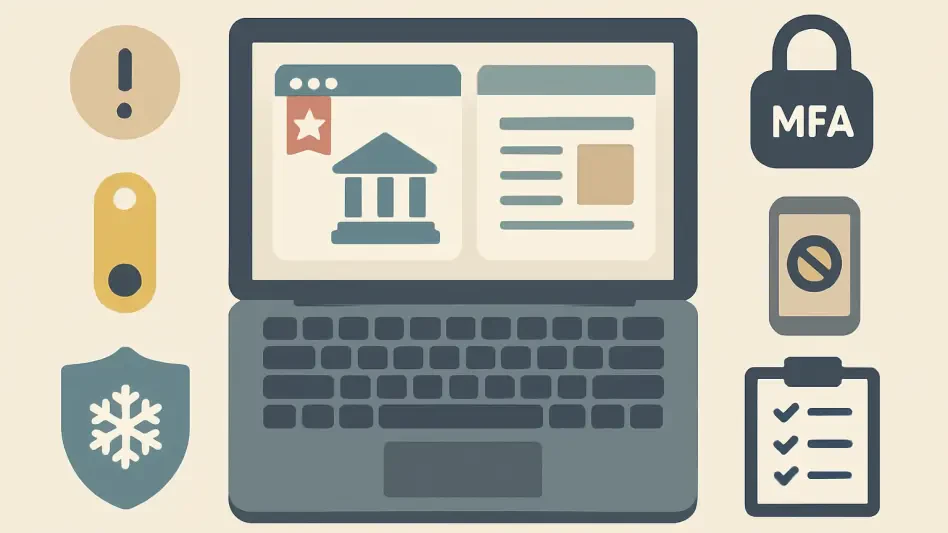In an era where digital infrastructure underpins nearly every aspect of society, the European Union (EU) confronts a daunting array of cyber threats that can destabilize economies, jeopardize national security, and shatter public confidence in technology. From insidious data breaches to sophisticated state-sponsored attacks, the risks are escalating at an alarming pace. This article delves into the intricate mechanisms through which the EU addresses these pressing challenges, spotlighting a comprehensive framework built on strategic policies, cross-border collaboration, and operational agility. It examines how the EU fortifies its defenses against large-scale cyber crises by integrating innovative tools and fostering a unified approach among member states. The urgency of robust cyber crisis management cannot be overstated, as the consequences of inaction could be catastrophic. By exploring the key pillars of the EU’s strategy, this piece aims to illuminate how the region is forging a path toward resilience and security in an increasingly volatile digital landscape.
Forging Unity Through Collaboration
The foundation of the EU’s cyber crisis management lies in its unwavering commitment to collaboration across borders and sectors. Cyber threats, by their very nature, transcend national boundaries, making isolated responses ineffective against their pervasive reach. To counter this, the EU has established platforms like the network of Computer Security Incident Response Teams (CSIRTs), which facilitate seamless information sharing among member states. These networks bring together governments, private industry, and civil society, creating a collective defense mechanism where insights and resources are exchanged in real time. This collaborative ethos ensures that a threat detected in one country can trigger a region-wide alert, enabling preemptive measures elsewhere. By dismantling barriers to communication, the EU constructs a digital fortress where unity amplifies strength, ensuring that no member state faces the perils of cyber attacks alone. Such synergy is not just a strategy but a necessity in a world where adversaries exploit the smallest gaps in coordination.
Beyond the operational networks, the EU’s collaborative framework extends to policy alignment and joint exercises that simulate real-world cyber crises. Regular training sessions and tabletop exercises involving multiple stakeholders help refine response protocols and build trust among participants. These initiatives ensure that member states are not merely sharing data but are also aligned in their strategic objectives, fostering a cohesive approach to threat mitigation. Moreover, partnerships with private sector entities bring cutting-edge technological expertise into the fold, enhancing the EU’s capacity to anticipate and counter evolving threats. This multi-layered collaboration also emphasizes transparency, as seen in public-private dialogues that shape cybersecurity policies. By integrating diverse perspectives, the EU creates a robust ecosystem where every actor plays a pivotal role in safeguarding the digital realm, demonstrating that collective action is the most potent weapon against borderless cyber adversaries.
Emphasizing Preparedness for Swift Action
Preparedness stands as a critical pillar in the EU’s strategy to manage cyber crises effectively, ensuring that responses are not reactive but anticipatory. A prime example of this approach is the revised Cyber Blueprint, a comprehensive guideline adopted by the Council of the EU, which lays out specific steps for handling large-scale cyber incidents. This framework provides a roadmap for member states to follow during emergencies, minimizing chaos and ensuring a structured response. Additionally, the EU Cybersecurity Reserve, overseen by the European Union Agency for Cybersecurity (ENISA), serves as a rapid-response arsenal, stockpiling expertise and resources for immediate deployment. This reserve acts as a safety net, guaranteeing that no member state is left unsupported when disaster strikes. By prioritizing readiness, the EU reduces the window of vulnerability, allowing for quicker containment of threats and limiting their potential to wreak havoc across the region’s digital infrastructure.
Further strengthening this proactive stance, the EU invests in continuous training and capacity building to keep its response mechanisms sharp. Regular updates to contingency plans ensure they remain relevant amid rapidly changing threat dynamics, while simulations test the resilience of systems under pressure. These efforts are complemented by initiatives to bolster critical infrastructure protection, recognizing that sectors like energy and finance are prime targets for cyber adversaries. The emphasis on preparedness also extends to public awareness campaigns, educating citizens and businesses about cyber hygiene to prevent incidents at the grassroots level. By weaving together policy frameworks, resource allocation, and education, the EU constructs a multi-faceted shield against cyber crises. This comprehensive approach underscores a fundamental truth: the best defense is one that anticipates challenges before they materialize, ensuring that the region remains a step ahead of those who seek to exploit digital vulnerabilities.
Coordinating Efforts Through Key Institutions
Institutional coordination forms the backbone of the EU’s ability to manage cyber crises with precision and efficiency. Central to this effort are entities like ENISA, the European Commission, and CERT-EU (the Cybersecurity Service for Union Institutions), each contributing specialized expertise to the broader cybersecurity ecosystem. ENISA, for instance, not only manages the EU Cybersecurity Reserve but also drives the development of best practices and standards that member states can adopt. Meanwhile, CERT-EU focuses on protecting EU institutions themselves, offering rapid incident response and threat intelligence. Together, these organizations create a seamless network of support, ensuring that expertise flows freely across borders. Tools like the European CSIRT Inventory further enhance this coordination by mapping response teams throughout the region, providing a clear picture of available resources and capabilities at any given time.
This institutional synergy is not limited to operational support but also encompasses strategic planning and policy formulation. The European Commission plays a pivotal role in aligning national cybersecurity strategies with EU-wide objectives, ensuring consistency in how crises are addressed. Regular inter-agency collaborations and joint task forces help identify gaps in the current framework, paving the way for targeted improvements. These coordinated efforts are vital in a landscape where cyber threats can exploit even the slightest misalignment between national and regional responses. By fostering a culture of shared responsibility, the EU ensures that its institutions operate as a unified front, ready to tackle incidents of any scale. This intricate web of coordination highlights the importance of having dedicated bodies that can orchestrate a collective defense, proving that a well-organized institutional structure is as crucial as technological solutions in the fight against cyber threats.
Staying Ahead of Evolving Cyber Risks
The ever-shifting nature of cyber threats demands that the EU remain agile and forward-thinking in its crisis management strategies. As attackers employ increasingly sophisticated methods, from ransomware to advanced persistent threats, static defenses are no longer sufficient. The EU addresses this by regularly revising key frameworks like the Cyber Blueprint to incorporate lessons learned from past incidents and emerging trends. Investments in the Cybersecurity Reserve also reflect a commitment to maintaining cutting-edge tools and expertise that can counter novel attack vectors. This adaptability ensures that the region is not merely responding to current threats but actively preparing for future challenges, positioning itself as a global leader in cybersecurity resilience. By embracing a mindset of continuous improvement, the EU demonstrates an understanding that the digital battlefield is one of constant evolution, requiring perpetual vigilance and innovation.
Moreover, the EU’s focus on adaptability extends to fostering research and development in cybersecurity technologies. Collaborative projects funded across member states aim to pioneer solutions that can detect and neutralize threats before they escalate into crises. Partnerships with academic institutions and tech companies further enrich this effort, bringing fresh ideas and perspectives into the fold. This proactive approach also involves monitoring global cyber threat trends to anticipate risks that may soon impact the region. By integrating these insights into policy updates and operational planning, the EU builds a dynamic defense system capable of withstanding tomorrow’s challenges. Such forward-looking strategies underscore the importance of staying ahead of adversaries, ensuring that the region’s digital ecosystem remains secure even as the nature of cyber risks transforms. This relentless pursuit of innovation cements the EU’s reputation as a trailblazer in navigating the complexities of cyber crisis management.
Reflecting on a Resilient Digital Legacy
Looking back, the EU’s journey in tackling cyber crisis management reveals a steadfast dedication to unity, preparedness, and adaptability. Through meticulously crafted frameworks like the Cyber Blueprint, robust institutional coordination led by entities such as ENISA, and a proactive embrace of evolving threats, the region has built a formidable defense against digital adversaries. Collaborative efforts that spanned borders and sectors proved instrumental in creating a shared shield, while strategic foresight ensured that responses were swift and effective. As the digital landscape continues to evolve, the groundwork laid by these initiatives offers a blueprint for other regions to follow. Moving forward, the EU should focus on deepening technological innovation and expanding international partnerships to further enhance its capabilities. By sustaining this momentum, the region can fortify its digital borders, ensuring that resilience remains a hallmark of its approach to safeguarding the future of cyberspace.








